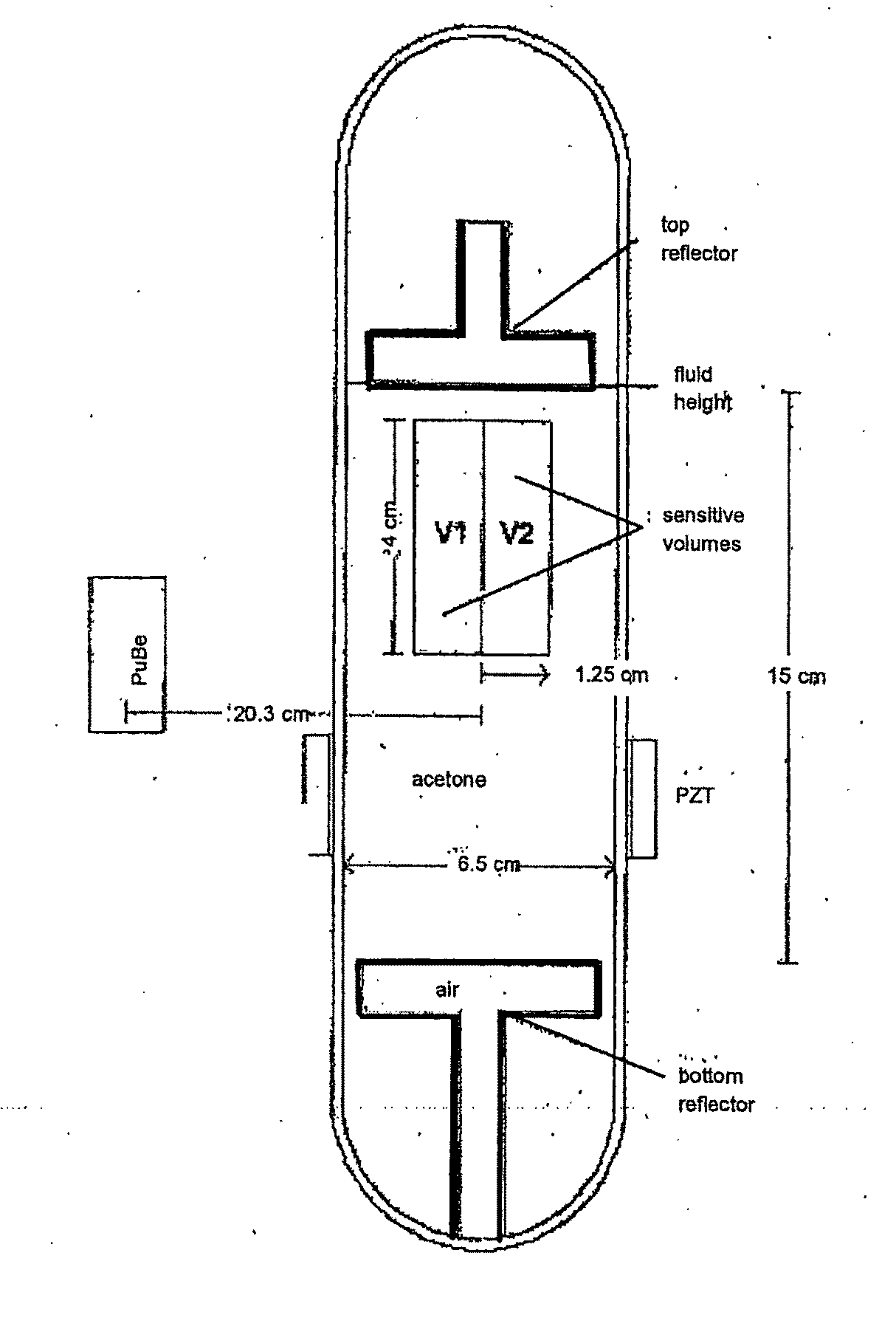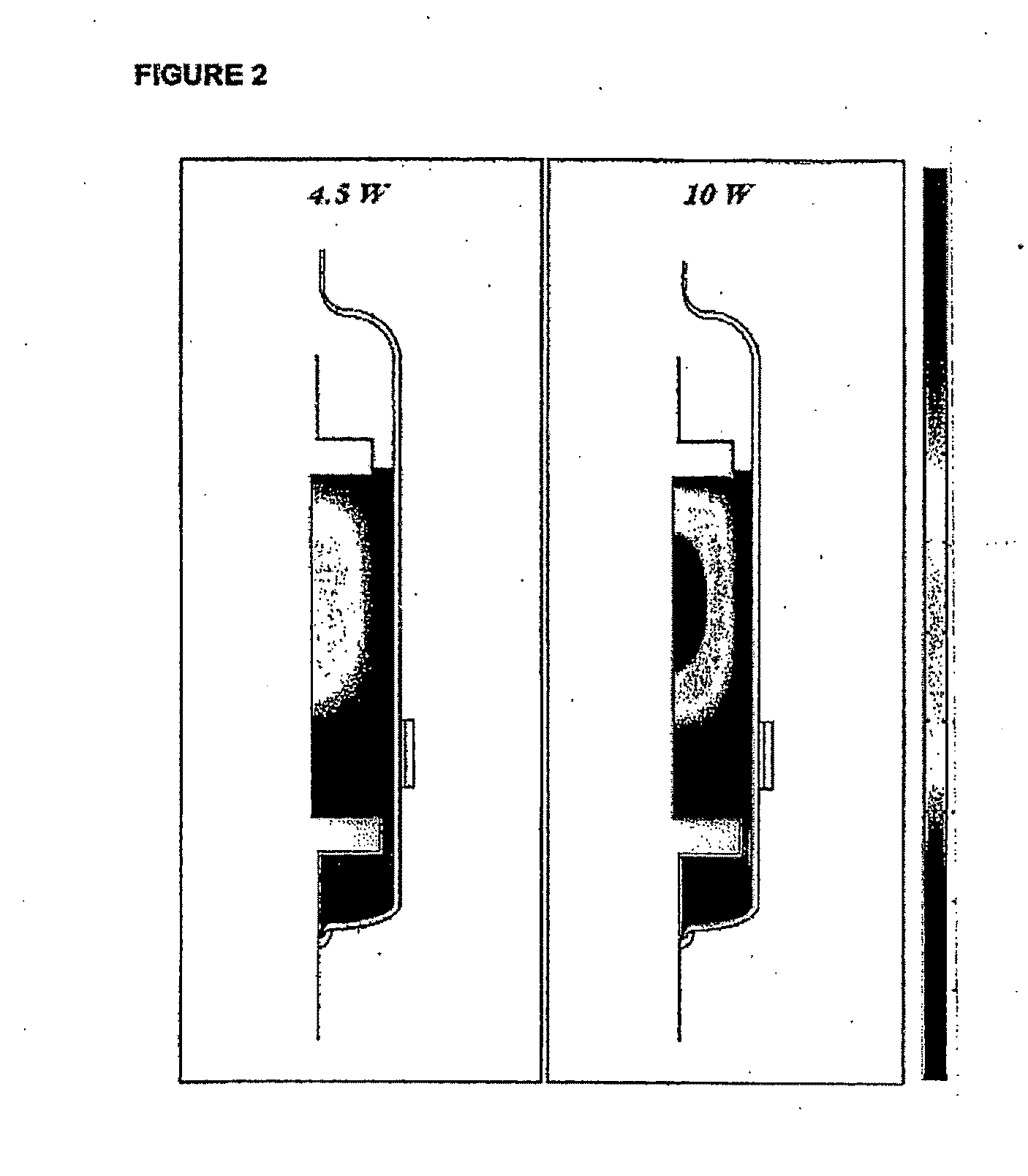Compositions and methods for determining directionality of radiation
- Summary
- Abstract
- Description
- Claims
- Application Information
AI Technical Summary
Benefits of technology
Problems solved by technology
Method used
Image
Examples
first embodiment
A First Embodiment
[0042]Radiation detection in tensioned metastable fluids is based, in part, on the principle that incident nuclear particles interact with a tensioned fluid wherein the intermolecular bonds are sufficiently weakened such that nuclear particles are capable of triggering a localized explosive phase change in the fluid. A liquid in a tensile state is metastable below its thermal equilibrium state, unlike a superheated liquid which is in a state of thermal superheat which is above its normal boiling point. Tension in fluids is analogous to the stretching of solid structures. The energy required to tear apart the intermolecular bonds of a solid decreases as the tension in the structure increases. In an analogous manner, the excess trigger energy required to break the intermolecular bonds between liquid molecules decreases with increasing tension metastability; eventually resulting in spontaneous triggering of explosive phase change at the spinodal limit of tension. Belo...
second embodiment
A Second Embodiment
[0088]In another embodiment, tension metastable fluid states offer a potential for advancements in radiation detection. Such metastable fluid states can be attained using tailored resonant acoustics to result in acoustic tension metastable fluid detection (ATMFD) systems. Present-day neutron detectors sometimes may be bulky, expensive, require different detector systems for various neutron energy groups and are not suited for providing information on which direction neutron radiation arrived. Radiation detection in ATMFD systems is based on the principle that incident nuclear particles interact with the dynamically tensioned fluid wherein the intermolecular bonds are sufficiently weakened such that even fundamental particles can be detected over eight orders of magnitude or more in energy with intrinsic efficiencies far above conventional detection systems. In the case of neutron-nuclei interactions the ionized recoil nucleus ejected from the target atom locally d...
PUM
 Login to View More
Login to View More Abstract
Description
Claims
Application Information
 Login to View More
Login to View More - R&D
- Intellectual Property
- Life Sciences
- Materials
- Tech Scout
- Unparalleled Data Quality
- Higher Quality Content
- 60% Fewer Hallucinations
Browse by: Latest US Patents, China's latest patents, Technical Efficacy Thesaurus, Application Domain, Technology Topic, Popular Technical Reports.
© 2025 PatSnap. All rights reserved.Legal|Privacy policy|Modern Slavery Act Transparency Statement|Sitemap|About US| Contact US: help@patsnap.com



